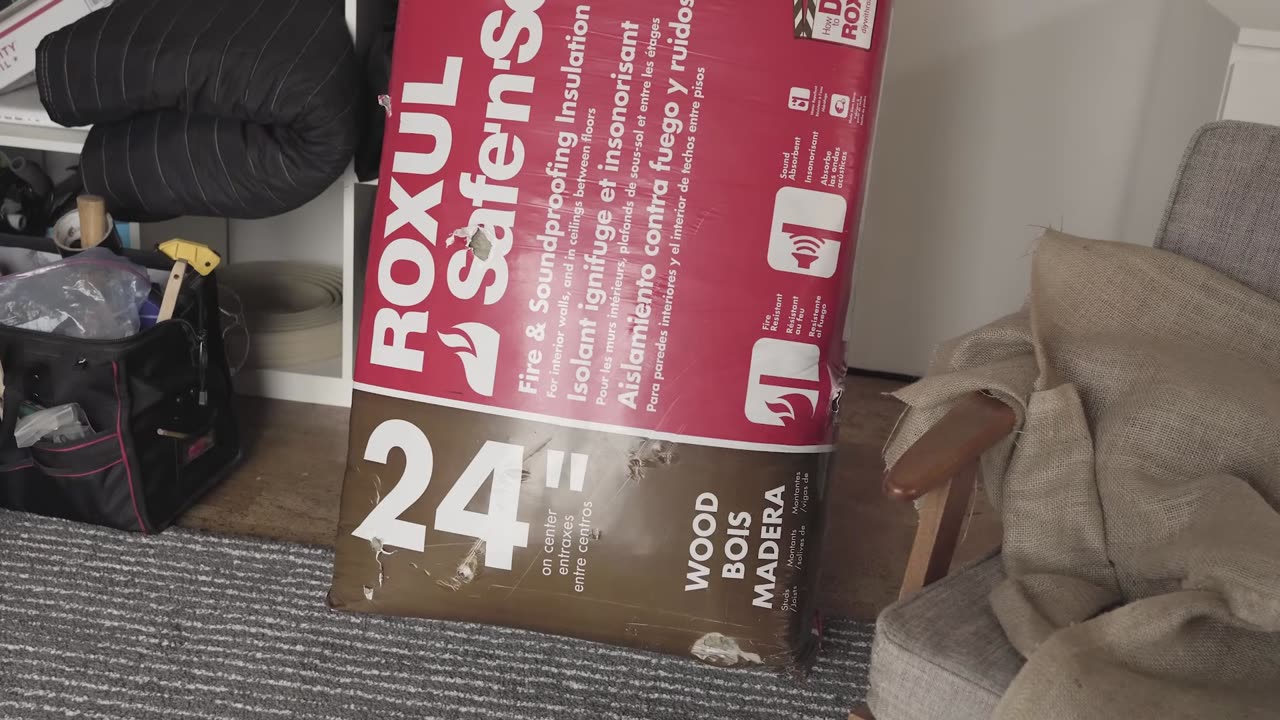Premium Only Content

How to Build Your Own Acoustic Panels
#DIY #homerecording #acousticpanel
How do you dramatically improve your audio? Record in a space that's treated for sound. Below are all the tools, materials & instructions for building affordable acoustic panels. DIY Kit:
Total cost per panel: ~$25 and weighs 12-13lbs.
Music by PremiumBeat.com.
Tracks:
Blue Notes by: Mattijs Muller
BUILD
Step 1: measure for cuts
Take one of the 1 x 4 x 8 planks and make a mark at 47" inches.
On that same plank, make the next mark at 24.5" and what is left over will be another 24.5" piece.
Repeat the measurements above on another 1 x 4 x 8 plank.
Take another 1 x 4 x8 plank and make marks for two 47" pieces.
Take the 1 x 3 x 10 plank and make a mark every 9 inches. Then make a mark for two 23" pieces.
Tracks:
Blue Notes by: Mattijs Muller
BUILD
Step 1: measure for cuts
Take one of the 1 x 4 x 8 planks and make a mark at 47" inches.
On that same plank, make the next mark at 24.5" and what is left over will be another 24.5" piece.
Repeat the measurements above on another 1 x 4 x 8 plank.
Take another 1 x 4 x8 plank and make marks for two 47" pieces.
Take the 1 x 3 x 10 plank and make a mark every 9 inches. Then make a mark for two 23" pieces.
Start with the top of bottom side, wrap your fabric around the frame and place one staple into the middle and one into each corner.
Go to the opposite side and repeat the same process, remembering to pull tight as you staple.
Go to the side of the panel do this same process, one staple in the middle and each corner.
Turn over the entire panel and make sure your covering is tight across the panel.
Flip the panel back over and proceed to insert one staple approximately every inch, going around the entire panel, pulling tight as you go.
For the corners, fold the excess fabric in half forming a 45 degree angle and wrap it around the top and bottom corners of the panel, pull tight and staple to the back.
Step 5: finishing and hanging
To finish the panel, attach two 1-1/4" cork stoppers to each of the bottom corners of your panel. This will create space between the wall and your panel so that sound reflections can get trapped in the back of the panel.
To attach to the wall, I used one eye lag screw that allowed me to go straight into a stud and another screw with a wall anchor so that I didn't have to worry about finding another stud and could place the screws any distance I needed.
I made two holes in the back of the panel and hung them on the wall screws that I left a couple inches out from the wall to create enough space to create a gap between the panel and the wall.
-
 49:34
49:34
TruthStream with Joe and Scott
17 hours agoEllen P Lincoln interviews Joe: A deep dive into his history and background. Premiers 7/19
4.65K1 -
 LIVE
LIVE
Lofi Girl
2 years agoSynthwave Radio 🌌 - beats to chill/game to
684 watching -
 20:14
20:14
GritsGG
12 hours agoHackers vs Win Squad! Let's Get it Done!
1.07K -
 59:26
59:26
Omar Elattar
9 months agoFrom HEROIN To CEO: How I Overcame Addiction & Built A $120k/Month Business
1.1K -
 26:18
26:18
Stephen Gardner
9 hours ago🔥YES! Trump makes TWO HUGE moves on Epstein!!
19.4K48 -
 1:58:25
1:58:25
Badlands Media
13 hours agoDevolution Power Hour Ep. 373: Narrative Whiplash, Border Theater, and the Trump Time Bomb
79.5K35 -
 1:01:56
1:01:56
Man in America
14 hours agoVICTORY! DOJ Drops All Charges Against Doctor Who Defied COVID Tyranny w/ Dr. Kirk Moore
49.6K34 -
 7:30:55
7:30:55
RalliedLIVE
11 hours ago $15.93 earnedHIGH OCTANE WARZONE SOLOS ALL DAY
82.2K3 -
 5:03:19
5:03:19
Spartan
6 hours agoSpartan - Pro Halo Player for OMiT | Ranked
23.7K1 -
 1:57:36
1:57:36
DLDAfterDark
5 hours ago $5.11 earnedGuns Aren't Political - The Gun Owners Leadership Summit AKA G.O.A.L.S in Aug!
24.3K2